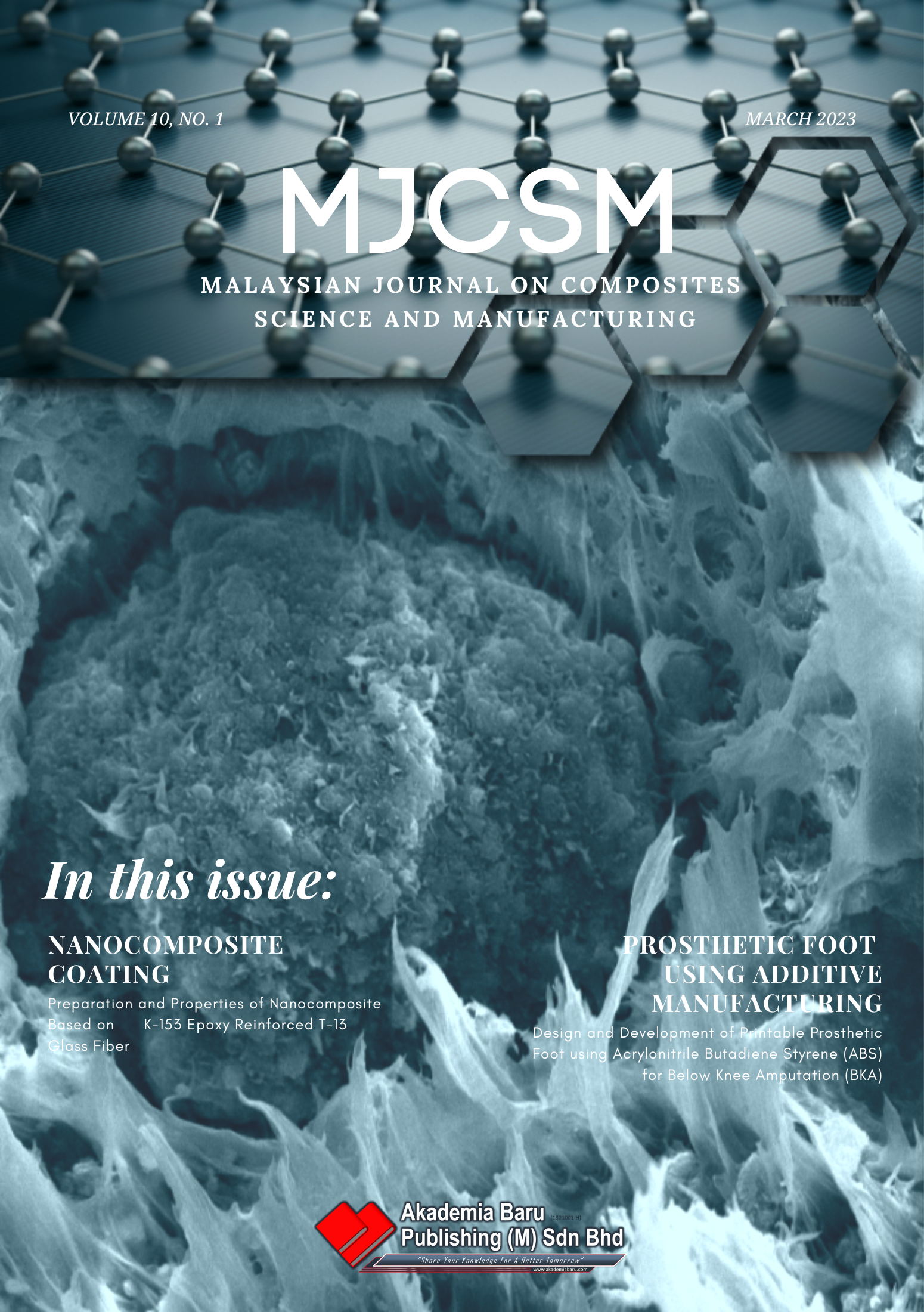Design and Development of Printable Prosthetic Foot using Acrylonitrile Butadiene Styrene (ABS) for Below Knee Amputation (BKA)
DOI:
https://doi.org/10.37934/mjcsm.10.1.1123Keywords:
3D Printing, Prosthetic Foot, Acrylonitrile Butadiene Styrene (ABS)Abstract
Prosthesis is an artificial replacement for a person's missing limb to help regain mobility and the ability to manage daily activities. The type of prosthetic covered in this project is for people with below-knee amputation (BKA). Muscle fatigue is a major issue for amputees who lose a lower limb after prolonged use of artificial limbs. Available designs of prosthetics for BKA are also expensive. This study aims to design and develop an affordable and comfortable prosthetic foot with an energy-story ability for persons with BKA using an additive manufacturing process to help reduce fatigue. Three conceptual designs based were developed for this purpose. Based on the design selection matrix, the best design was chosen and developed in SolidWorks 2013 environment. Stress and strain analyses were simulated to verify the design's ability to withstand the weight of a sample patient with BKA. A sample of patient details, including weight, amputation side and sole (of the foot) length, were obtained and implemented in the prosthetic foot design. Due to its strength and durability, the design was printed on the Veglar V-821 additive manufacturing machine using Acrylonitrile Butadiene Styrene (ABS) material. A pilot test with a male patient with BKA was conducted under the supervision of a prosthetist under two conditions: standing and walking. The prosthetic prototype did not break during the test, and the patient felt comfortable using it. This finding shows that additive manufacturing can produce an affordable and comfortable prototype of a prosthetic foot using ABS. Hence, more BKA patients can benefit from inexpensive prostheses and finally help them achieve a better quality of life.
Downloads












